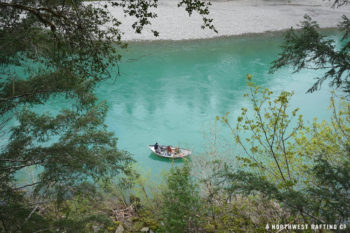Fire and Water: Protecting the Chetco River
The U.S. Forest Service is considering logging the Wild and Scenic Chetco River after a wildfire burned a portion of the watershed last summer, take action to ensure safe practices are followed.
Last summer, the Chetco Bar fire in Southwest Oregon burned over 170,000 acres of our U.S. National Forest in Southwest Oregon, close to the town of Brookings and the California border in the Wild and Scenic Chetco River watershed. There is now a push to log and remove burned trees from the watershed. How we decide to act in the Chetco could set a precedent nationally – impacting our clean drinking water supplies, salmon and steelhead habitat, and recreation opportunities for generations to come.
Fire has always been a natural part of the landscape in the forests across our region, but we are now in a new era of “megafires.” On our National Forests, a century of forest fire suppression, the push to grow high densities of trees in large plantation-like mono-cultures, and especially, changing climatic conditions have led to drier and hotter weather patterns and created more combustible conditions. The larger and hotter forest fires that result can have significant impacts on forest health, rivers, water quality, and local communities.
The science on the effects of logging on the fragile post-fire landscape clearly shows dramatic increases in the amount and duration of harmful sediment in streams and rivers compared to watersheds that are left alone to recover. Some simple rules can help reduce harm to water quality and salmon habitat. This includes staying away from streamside areas and staying off of steep slopes prone to soil erosion and landslides that once triggered can dump too much sediment into streams over an extended period of years. It is vitally important to avoid creating new roads and decommission any temporary roads that are often the largest contributor to harmful amounts of stream sediment.
So, what will happen in the Chetco? This watershed is home to abundant salmon and steelhead runs, supplies drinking water to 14,000 residents in Brookings, and supports outstanding upland and instream recreation. There’s a lot at stake.
The U.S. Forest Service is now considering alternatives and taking public comment on a draft proposal to cut trees burned by the fire that could generate more than 70 million board feet of timber – double what the Rogue River-Siskiyou National Forest sold all of last year.
To their credit, thus far the Forest Service is considering staying out of high-value areas and using sensible management practices in their proposed action. Unfortunately, some extreme voices are calling for controversial and unsustainable levels of clearcutting that would sacrifice clean water and other public values. As in the past, this approach would likely only lead to more conflict and litigation, and if implemented, affect extensive damage to soils, water, and fish and wildlife habitat.
As we craft responses to the Chetco Bar fire and future wildfires that will inevitably occur in the region, we must do our utmost to protect the most valuable natural resources that come from our forests: the clean water, rivers and wild salmon that we all want to preserve for generations to come.
[su_button url=”https://act.americanrivers.org/page/5315/action/1″ background=”#ef8c2d” size=”4″ center=”yes”]Take Action »[/su_button]





1 response to “Fire and Water: Protecting the Chetco River”
I am a Chetco riverside resident. There are enough problems on the Chetco. Notwithstanding that the USFS got lucky last summer when they were saved by a mid-summer rainstorm that halted the Chetco Bar Fire, this summer heavy algae growth appeared, and now floating foam and an oily surface sheen is present in slower areas, every morning. The river is under pressure and more erosion into the river will put dangerous amounts of pressure on its ecology.